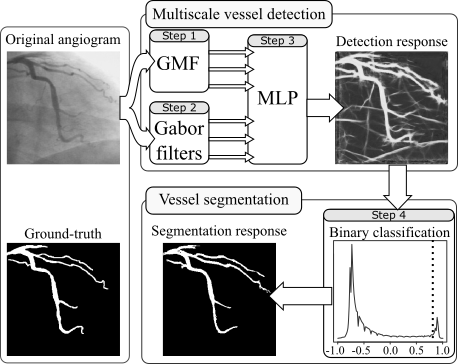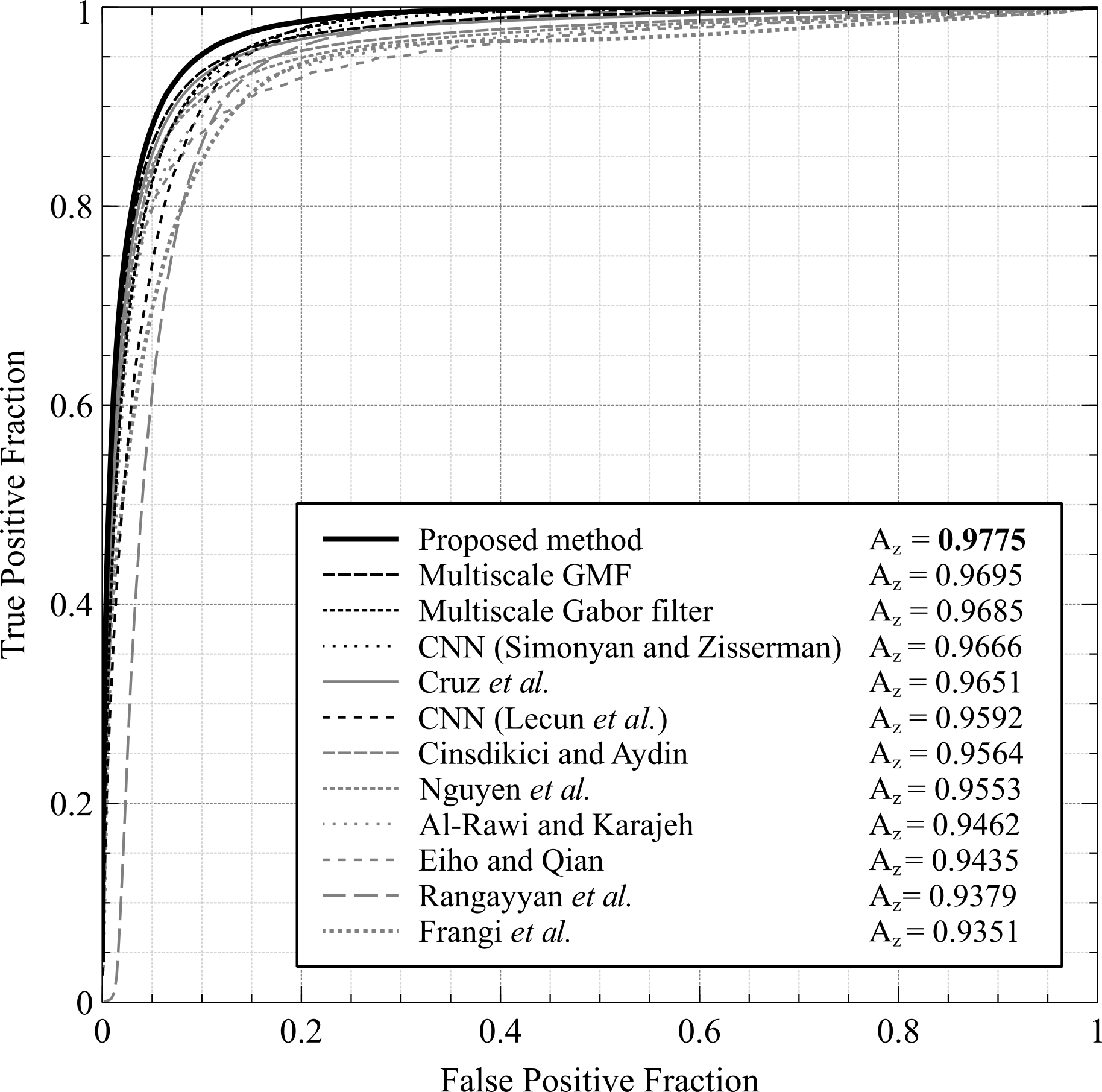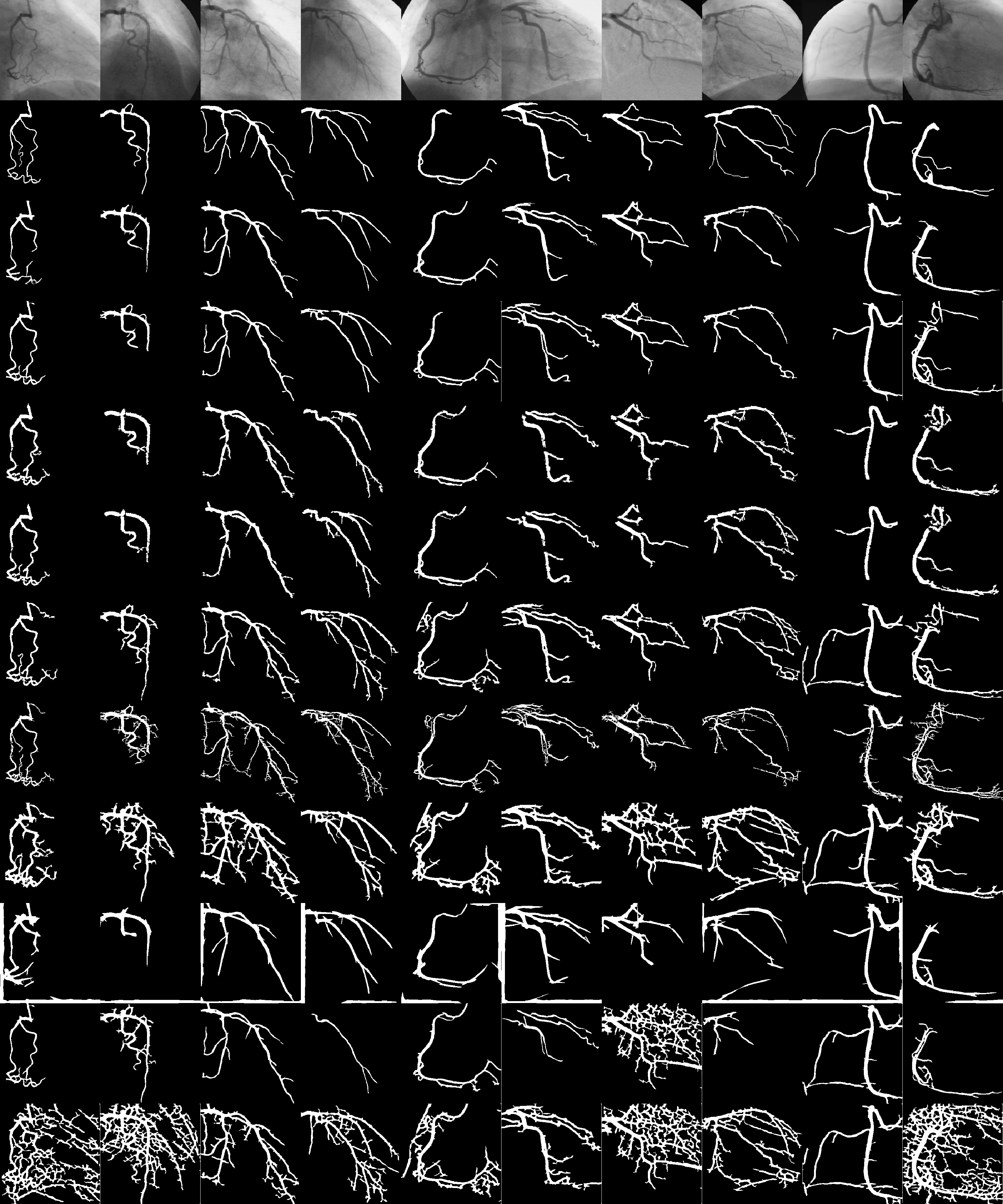Automatic Segmentation of Coronary Arteries in X-ray Angiograms using Multiscale Analysis and Artificial Neural Networks
This paper presents a novel method for the automatic segmentation of coronary arteries in X-ray angiograms, based on multiscale analysis and neural networks. The multiscale analysis is performed by using Gaussian filters in the spatial domain and Gabor filters in the frequency domain, which are used as inputs by a multilayer perceptron (MLP) for the enhancement of vessel-like structures. The optimal design of the MLP is selected following a statistical comparative analysis, using a training set of 100 angiograms, and the area under the ROC curve ( Az ) for assessment of the detection performance. The detection results of the proposed method are compared with eleven state-of-the-art blood vessel enhancement methods, obtaining the highest performance of Az=0.9775 , with a test set of 30 angiograms. The database of 130 X-ray coronary angiograms has been outlined by a specialist and approved by a medical ethics committee. On the other hand, the vessel extraction technique was selected from fourteen binary classification algorithms applied to the multiscale filter response. Finally, the proposed segmentation method is compared with twelve state-of-the-art vessel segmentation methods in terms of six binary evaluation metrics, where the proposed method provided the most accurate coronary arteries segmentation with a classification rate of 0.9698 and Dice coefficient of 0.6857 , using the test set of angiograms. In addition to the experimental results, the performance in the detection and segmentation steps of the proposed method have also shown that it can be highly suitable for systems that perform computer-aided diagnosis in X-ray imaging.
Share and Cite:
Cervantes-Sanchez, Fernando; Cruz-Aceves, Ivan; Hernandez-Aguirre, Arturo; Hernandez-Gonzalez, Martha A.; Solorio-Meza, Sergio E. 2019. "Automatic Segmentation of Coronary Arteries in X-ray Angiograms using Multiscale Analysis and Artificial Neural Networks" Appl. Sci. 9, no. 24: 5507.from the Special Issue: Signal Processing and Machine Learning for Biomedical Data (Applied Sciences,MDPI)
https://doi.org/10.3390/app9245507
Experimental results

Diagram of the proposed method, involving the steps of multiscale vessel detection, and coronary arteries segmentation by binary classification

Distribution of the generalization performance of each MLP configuration, measured in terms of the area under the ROC curve obtained using the testing set of 30 images.

Distribution of the number of architectures dominated by each configuration according to the ranking procedure using the testing set of images.

ROC curves obtained by the eleven vessel detection methods, and the proposed method, using the test set of 30 images.
